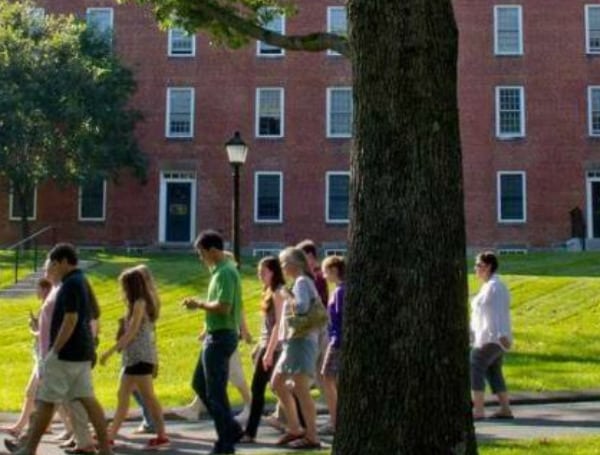Kendall Tietz Enrollment and retention rates among males when compared to their female counterparts at American colleges and universities are at r
Kendall Tietz
- Enrollment and retention rates among males when compared to their female counterparts at American colleges and universities are at record lows, The Wall Street Journal reported Monday.
- If the current trend continues in the coming years, for every man, two females will earn a college degree, Douglas Shapiro, the executive director of the non-profit research group National Student Clearinghouse (NSC), told the WSJ.
- The inconspicuous movement to increase enrollment among the male population has become “higher education’s dirty little secret,” college enrollment consultant Jennifer Delahunty told the WSJ.
Enrollment and retention rates among males when compared to their female counterparts at American colleges and universities are at record lows, The Wall Street Journal reported Monday.
If the current trend continues in the coming years, for every man, two females will earn a college degree, Douglas Shapiro, the executive director of the non-profit research group National Student Clearinghouse (NSC), told the Journal.
Women are typically the focus at higher education institutions amid an ongoing push for gender equality and protection against sexual assault on campus, the WSJ reported. As a result, schools are reluctant to promote initiatives that encourage the enrollment of men.
According to NSC data, at the end of the 2020-2021 school year, women made up 59.5% of college students, the WSJ reported. In a six-year time period from 2012 to 2018, 65% of women in the U.S. graduated, while only 59% of men graduated, according to data from the U.S. Department of Education.
The inconspicuous movement to increase enrollment among the male population has become “higher education’s dirty little secret,” college enrollment consultant Jennifer Delahunty told the WSJ.
The practice is most common among private, four-year schools, where the gender enrollment gap is the widest, the WSJ reported. Women made up a record-breaking average of 61% of students during the 2020-2021 school year, according to NSC data.
The gender gap is prevalent among different races, geographic locations and economic backgrounds, the WSJ reported. In fact, according to an analysis by the Pell Institute for the WSJ, enrollment rates among poor or working class white men are lower than black, Latino and Asian men with similar economic standing.
The common take has most often been that “men make more money, men hold higher positions, why should we give them a little shove from high school to college?” Delahunty told the WSJ. “If you have equally educated numbers of men and women that just makes a better society, and it makes it better for women.”
Few campuses are willing to spend money on male recruitment and retention when they are focused on groups considered historically underrepresented, Jerlando Jackson, department chair of the Education Leadership and Policy Analysis at the University of Wisconsin’s School of Education told the WSJ.
“As a country, we don’t have the tools yet to help white men who find themselves needing help,” Jackson told the WSJ. “To be in a time when there are groups of white men that are falling through the cracks, it’s hard.”
A mental-health counselor and men’s outreach coordinator at the University of Vermont, Keith E. Smith, suggested the university open a men’s center in 2008, but the idea was criticized by some women who asked, “Why would you give more resources to the most privileged group on campus,” he told the WSJ.
The focus on women in education is not confined to higher education institutions. In a March executive order, the White House established the Gender Policy Council.
The order said it was “intended to advance gender equity and equality, with sensitivity to the experiences of those who suffer discrimination based on multiple factors, including membership in an underserved community.”
Critics of the Gender Policy Council say it fails to recognize men and the difficulties they face, such as high rates of suicide, a shorter life expectancy, a higher likelihood of drug overdose and higher rates of suspension and expulsion, which are most disproportionate among black boys.
Support journalism by clicking here to our GoFundMe or sign up for our free newsletter by clicking here
Android Users, Click Here To Download The Free Press App And Never Miss A Story. It’s Free And Coming To Apple Users Soon

COMMENTS